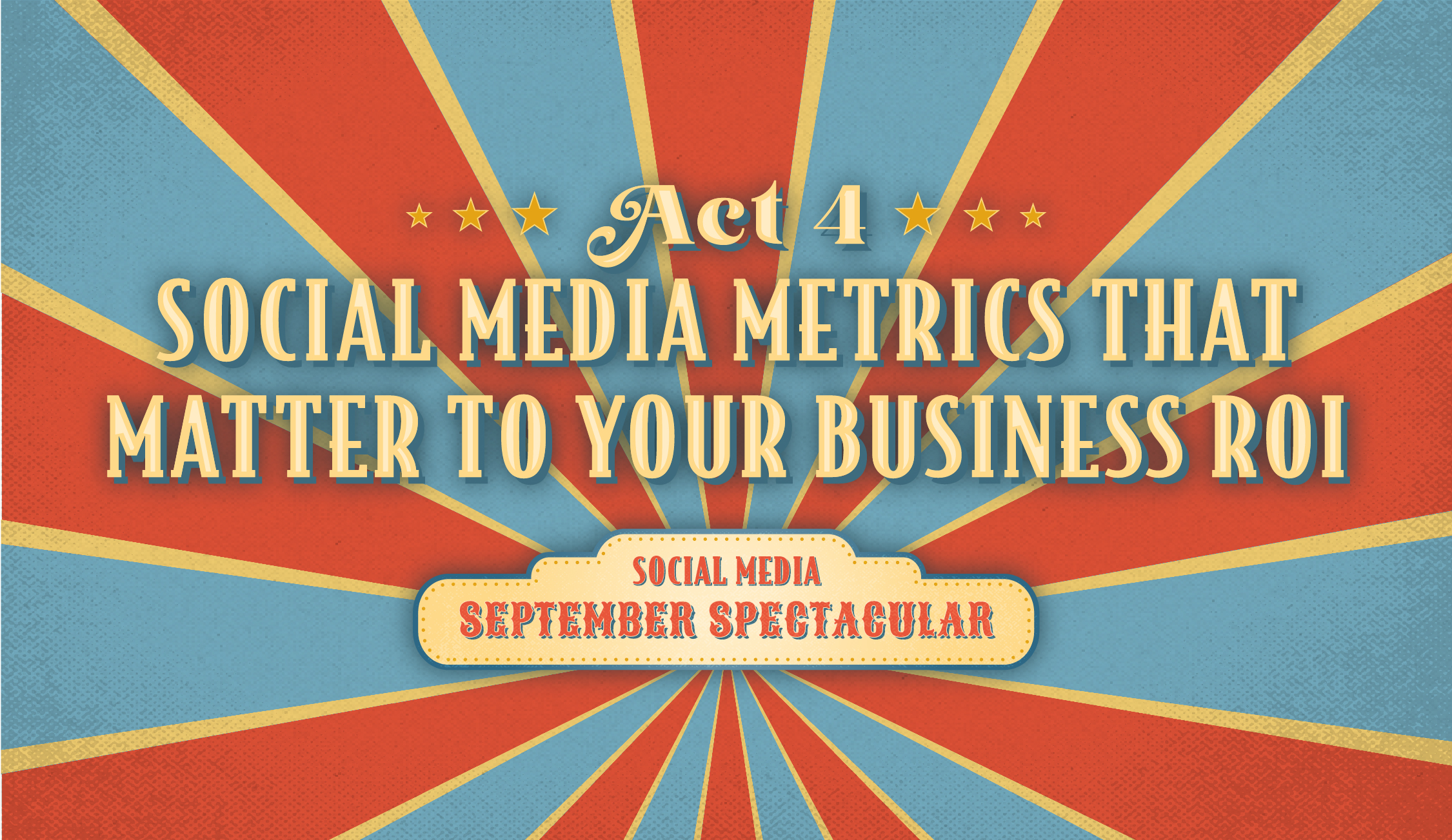The first act of the Social Media September Spectacular kicks off with developing your SMART goals and Key Performance Indicators (KPIs) for your social media strategy. This step is critical in the planning process so that you can properly attribute your campaign results to your business ROI. It is important to align your social media strategy with your business goals so that you can transform viewers and readers into buyers.
Social Media KPIs
After developing your SMART goals for your business, you can then develop your Key Performance Indicators that will lead your social media strategy. It’s important to note that KPIs should stay away from ‘vanity metrics’. Vanity metrics in the realm of social media means that a metric you plan to track doesn’t exactly lead to business growth or hold value. An example of this would be tracking how many new Facebook page followers you gain from a campaign. While having a large page following sounds impressive on the surface, if the majority of your followers aren’t purchasing from your company, then you’re probably not reaching the right audience.
We recommend building your social media KPIs around the following segments:
.png?width=600&name=Its%20a%20bay%20shower!%20(3).png)
| 1. Reach 2. Engagement 3. Return on Investment 4. Retention and Loyalty |
Reach
Reach KPIs surround the total number of people who see your content. Impressions, Mentions, or Share of Voice are all great Reach metrics you could include when developing your own KPIs.
Impressions: the number of times your content is displayed, no matter if it was clicked or not.
Mentions: how many times your brand is mentioned across social channels
Share of Voice: how many people are talking about your brand vs your competition
Here’s an example of a KPI you could formulate to your own business.
Example: Company Z will increase Facebook page impressions by 5% in Q3.
Fill in the blank: __{Your Company Name}__ will increase Instagram mentions by __% in __{time}__.
Engagement:
Measuring social media engagement tracks the number of users who take action with your brand and content. Engagement could be tracked in serval ways.
Here’s are a few examples:
- Calculating the number of reactions to a Facebook post like Likes or Favorites. This can be viewed as a vanity metric in some cases, however tracking this action also can determine content interest from your audience.
- Tracking the total number of comments on a piece of content
- Tracking content shares and retweets from your audience shows that your audience finds your content valuable enough that they want to inform others. When your content is shared, this also increases your reach.
- Tracking the number of link clicks from your campaigns that lead back to your website.
ROI/Return on Investment
This is often the most difficult metric to track for businesses when it comes to a social media strategy. Determine through your customer buyer’s journey which key moments lead to a sale. By pinpointing that step, you can focus your KPIs around those specific moments that often trigger a purchase.
Here’s a list of potential ROI based KPIs you could use to tailor to your business:
- Measuring direct sales revenue from social media, such as direct orders that stem from coupons or offerings that lead back to your website.
- Track lead conversions from email signups, downloads, or software trials.
- Measure your customer lifetime value (LTV). LTV is a projected revenue that you anticipate a customer spending in their lifetime with your business. Social media’s role in this scenario is usually effected by customer acquisition and touch points.
The bottom line when it comes to measuring ROI from social media, is that you have to define which social media engagements lead to a conversion and/or sale with your organization.
Retention and Loyalty
Social media is a great platform to measure your audience’s perception of your brand experience. Here are a few ways you can craft a KPI surrounding this topic.
- Watch customer reviews and ratings. Customers are opening expressing how they feel towards your brand, services and/or product. Use that information to develop a KPI that may increase positive reviews.
- Track issues resolved through social media. While this may not apply to all businesses, this is one way you can show how you’re taking care of your customers and therefore, increase brand retention.
- Measure response and resolution time. Many social media platforms will note in their messaging platforms how quickly a business responds to inquiries.
The best way to understand if your efforts are successful is by starting out with a baseline KPI that aligns with your overall business goals. Remember to be SMART in your goal setting so that you’re not overpromising and underdelivering to your customers and business.
That concludes Act 1 of the Social Media September Spectacular! Stay tuned for Act 2 in the series where we discuss Building Your Social Media Strategy and the Tools to Help.







